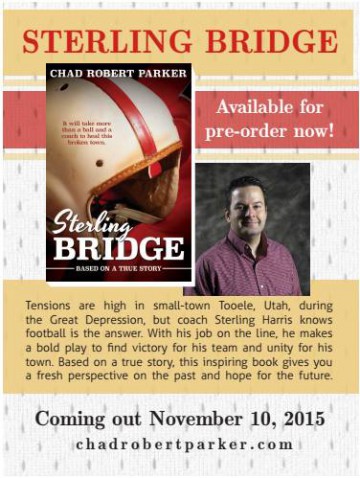Editor’s note (11/12/18): Since writing this press release, Anecdoting.com and Writcreate.com were both combined with ChadRobertParker.com. Now blog content for “Anecdoting” is simply found in the Story Prompts section of this website.
Anecdoting.com Announces Social “Story” Networking
SARATOGA SPRINGS, Utah-February 7, 2015—WritCreate, LLC, a Utah based workshop that develops writing creations, from children’s books to full length film novels, recently rolled out a unique concept where storytelling meets social networking. Anecdoting.com was born on January 1, 2015. How it grows will largely depend on what the owner describes as “stories like yours and mine, where everyday people share fun and/or interesting memories of tales from everyday lives.” If nothing else it is a great place to read and relax while enjoying other’s fun blurbs. The idea is something between blogging and “facebooking.”
The founder is Chad Robert Parker, a new author, who is set to publish his first novel, Sterling Bridge, on September 8th through Cedar Fort Publishing in Springville, Utah. Chad is also getting married this year, a story in itself. Chad comes from a family of six boys and lived in six states. When they had nothing to do they always had each other as built-in friends. Boredom is often the father of creativity and the Parker boys made and played a lot of games together. When Chad started writing he learned that “the short story format is a crash course for gaining writing skills and learning the Art—as well as the Science—of writing.” In coming up with various short tales he realized he drew much of the inspiration from actual experiences he had in life growing up. He knows others have similar great stories that live on in their families today. That was the genesis for creating “anecdoting,” to share in the fun of common human experience between friends, families, and society.
Anecdoting.com is free entertainment; it is a getaway experience; it is communal blogging about common topics of life at its best and worst. You can read about anything from a girl learning what a bidét is to a boy trying to outdo his older brother with a trick on a rope swing that would have been perfect for America’s Funniest Home Videos (though luckily for him was not caught on tape).
Stories have always been at the center of socialization. When people gather around a campfire or for any social function it has been the norm for persons to share about the events in their lives. Societies are built on the stories of its members. The best stories get passed down from generation to generation. Depending on how true the story is determines whether it can be categorized as folklore, legend, or maybe even considered actual history. In any case, the stories give a sense of a people and a place. What will the information age reveal about the people of today? Only time will tell, but if anecdoting.com is any indication we have much in common with our forbearers, only the method for sharing our story is a little different—electronic and universal.
Anecdoting.com is striving to take the experience to the web purporting a vision “to connect the world through storytelling.” Anecdoting.com is family friendly; it has a “come one come all philosophy” with wholesome content but parental guidance advised for children under 13, of course. If you are looking for an option, other than Facebook, to browse and enjoy a break from the routine in your daily life, take a moment to check out anecdoting.com. It might be the perfect cure for your boredom, or even the place you go to share about that “quirky pet,” “worst job,” or “first date.” You might even win a prize in the “weekly winner” category or in other monthly and quarterly giveaways.
Source: http://www.prlog.org/12423037-anecdotingcom-announces-social-story-networking.html

